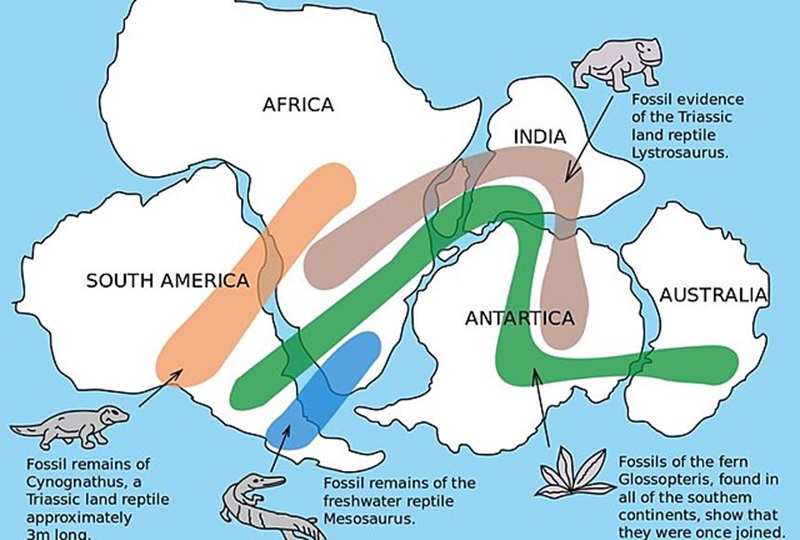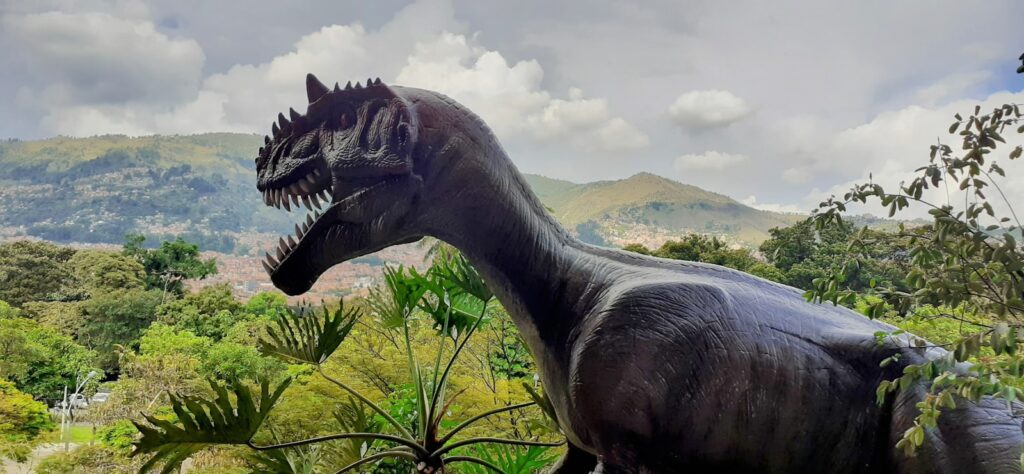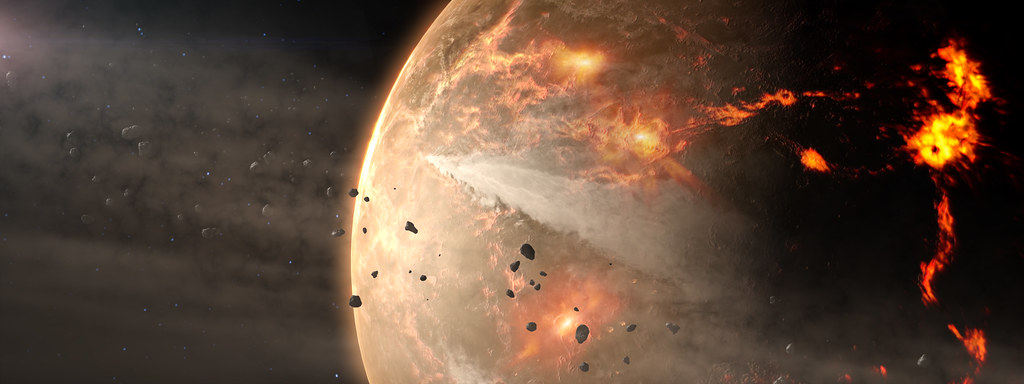Picture this: Earth, 252 million years ago. The planet is a scorching wasteland, still reeling from the most devastating mass extinction in its history. Volcanic ash clouds the sky, and the few surviving creatures scurry through a transformed landscape. Yet from this apocalyptic scene would emerge the most successful group of land animals ever to walk the Earth – dinosaurs. The Triassic Period wasn’t just another chapter in prehistoric history; it was the cosmic stage where dinosaurs seized their moment and never looked back.
The Great Dying Opens the Door
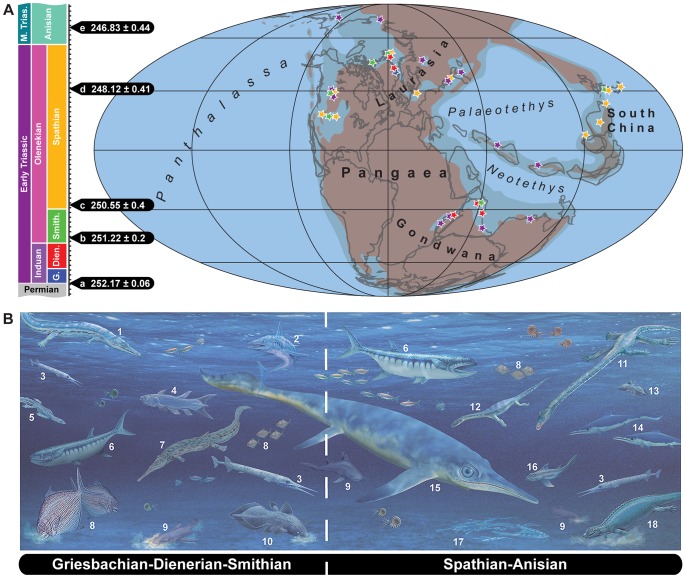
The Permian-Triassic extinction event, known as “The Great Dying,” wiped out 96% of marine species and 70% of terrestrial vertebrates. This wasn’t just another bad day for ancient life – it was the ultimate reset button for Earth’s ecosystems. The dominant synapsids (mammal-like reptiles) that had ruled for millions of years suddenly vanished, leaving behind ecological niches like empty thrones waiting for new rulers.
Imagine a bustling city suddenly becoming a ghost town, with all the best real estate up for grabs. That’s essentially what happened to Earth after the Permian extinction. The survivors faced a world of unlimited opportunity, and early archosaurs (the group that would give rise to dinosaurs) were perfectly positioned to capitalize on this cosmic clearance sale.
Climate Chaos Creates Evolutionary Pressure
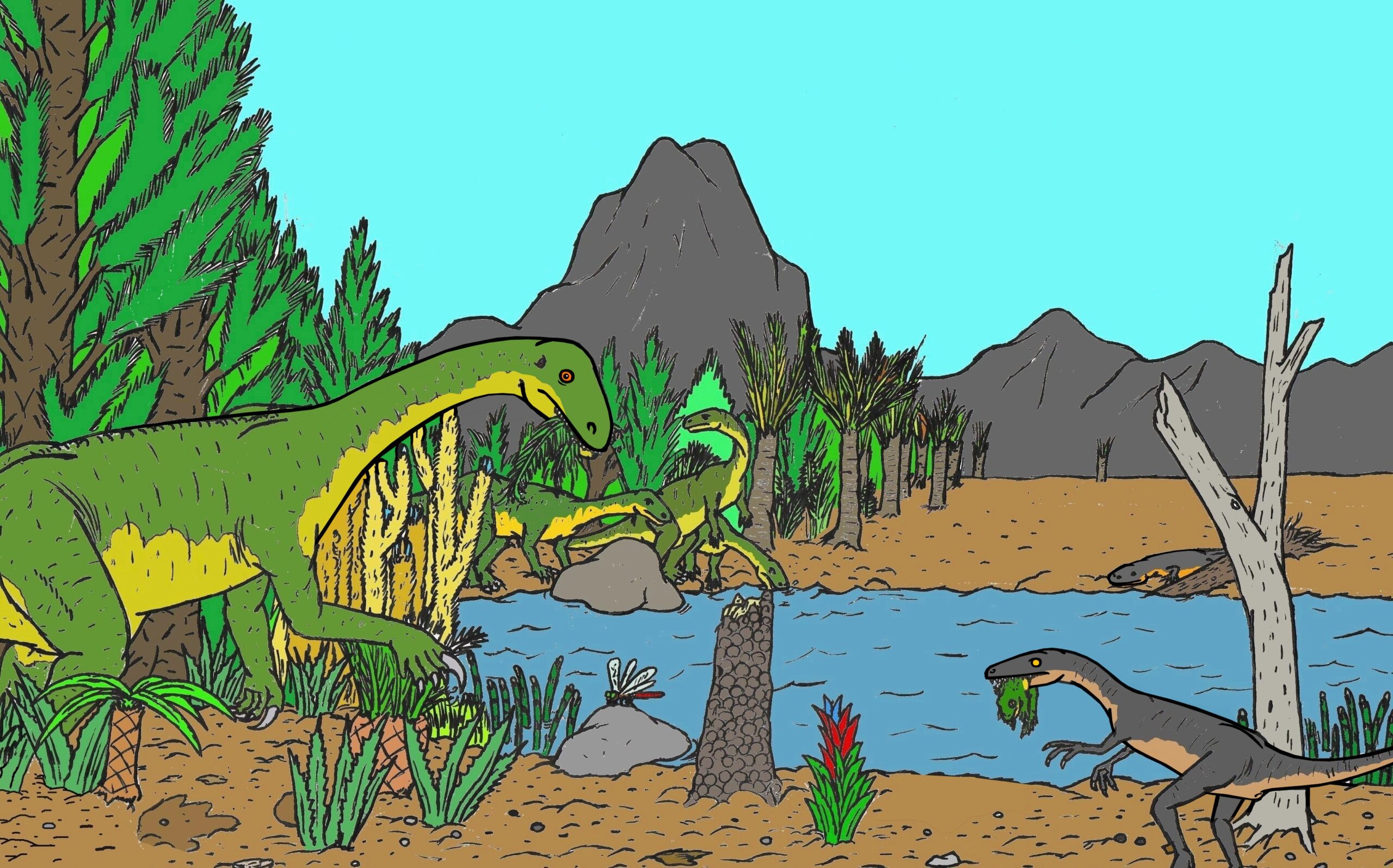
The Early Triassic climate was nothing short of brutal. Temperatures soared to levels that would make modern global warming seem like a gentle summer breeze. Surface temperatures reached 40°C (104°F) in some regions, creating a hothouse Earth that demanded radical adaptations. This wasn’t just uncomfortable weather – it was an evolutionary furnace that forged the traits that would define dinosaur success.
The extreme heat favored animals with efficient respiratory systems and heat-dispersing body structures. Early dinosaurs developed hollow bones and air sacs – innovations that would later prove crucial for their dominance. These adaptations weren’t just survival mechanisms; they were the foundation blocks for the most successful terrestrial animals in Earth’s history.
The climate extremes also created distinct wet and dry seasons, forcing animals to become more mobile and adaptable. This environmental pressure cooker was exactly what early dinosaur lineages needed to develop their remarkable versatility and resilience.
Pangaea’s Continental Configuration
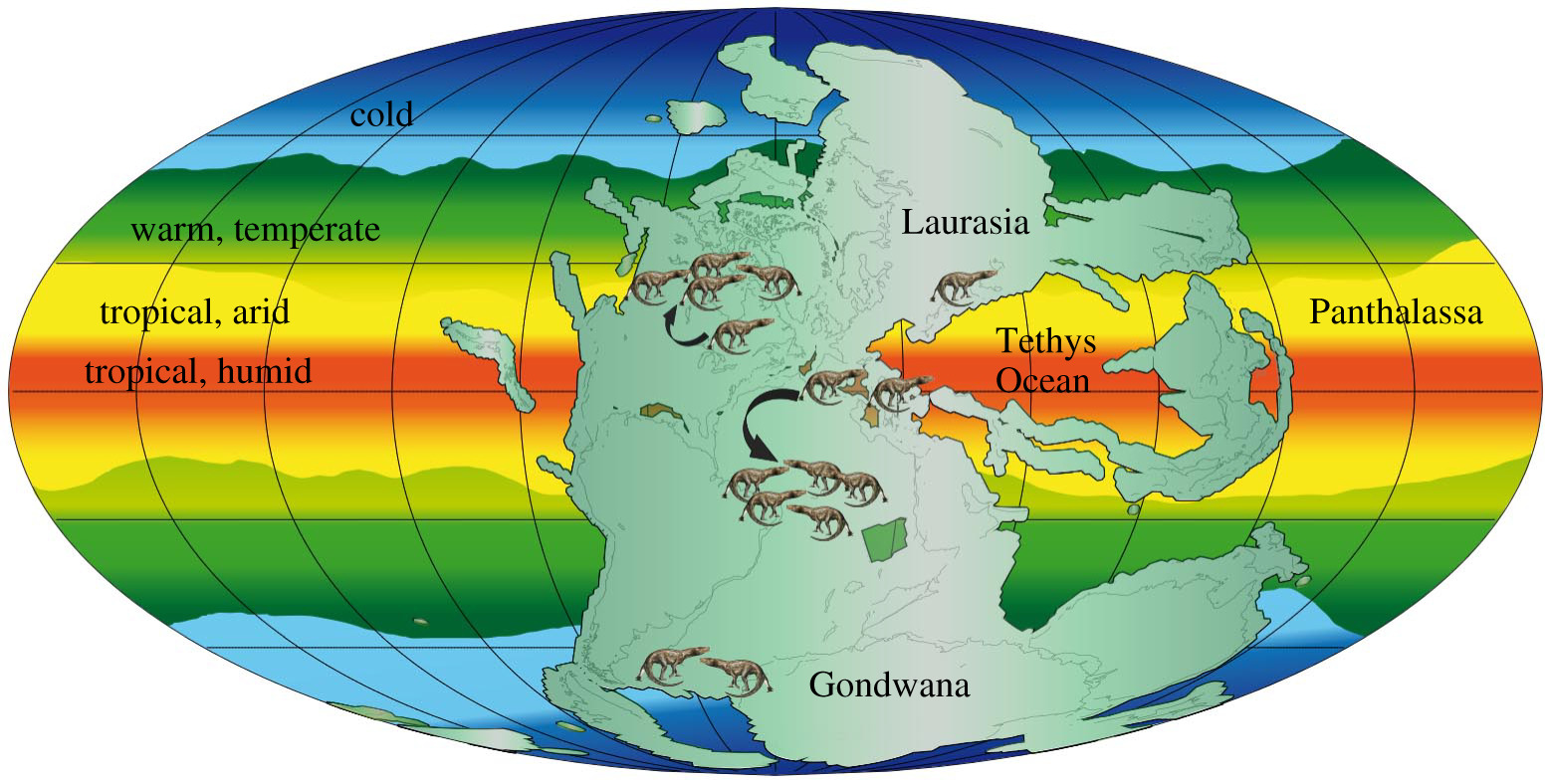
During the Triassic, all continents were fused into the supercontinent Pangaea, creating a massive landmass with unique environmental conditions. The interior of Pangaea was scorching hot and dry, while coastal regions experienced more moderate conditions. This geographic setup created a natural highway for species migration and evolution, allowing successful adaptations to spread rapidly across the globe.
The continental configuration also created distinct climate zones that favored different evolutionary experiments. Early dinosaurs could migrate between environments, testing their adaptations against various challenges. This geographic flexibility was like having a massive laboratory where evolution could run multiple experiments simultaneously.
The Rise of Archosaur Innovation
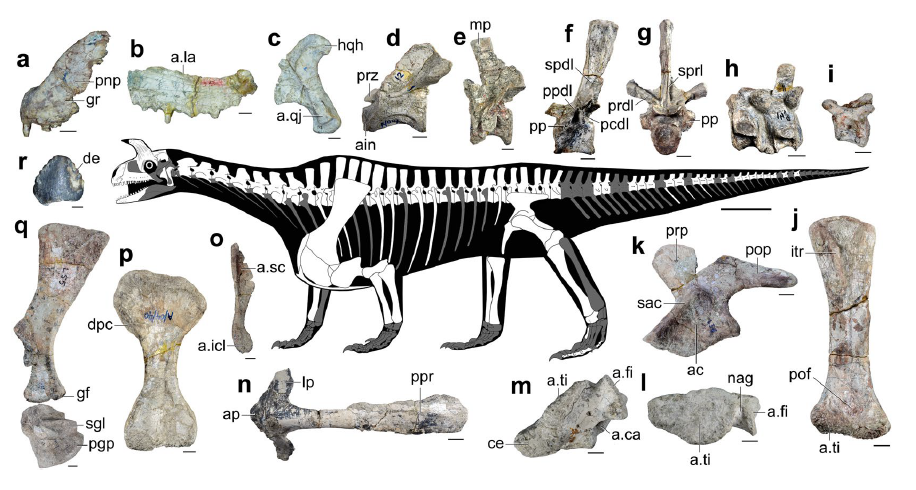
The archosaur lineage that gave birth to dinosaurs possessed several key innovations that set them apart from their competitors. Their upright limb posture, improved jaw mechanics, and sophisticated respiratory systems weren’t just minor improvements – they were revolutionary upgrades that transformed how large animals could function on land.
Unlike their sprawling competitors, early archosaurs developed an upright stance that reduced energy expenditure and increased speed. This might seem like a small change, but it was equivalent to upgrading from a horse-drawn cart to a sports car. The improved efficiency allowed them to be more active predators and more effective at escaping danger.
Their advanced skull structure also allowed for more powerful bite forces and better food processing capabilities. These improvements weren’t just about being better hunters – they opened up entirely new dietary niches and feeding strategies that their competitors couldn’t access.
Respiratory Revolution
Perhaps the most crucial innovation was the development of an advanced respiratory system featuring air sacs and hollow bones. This wasn’t just about breathing more efficiently – it was about fundamentally changing how large animals could function in the Triassic’s harsh environment. The air sac system allowed for unidirectional airflow, making oxygen extraction far more efficient than the bidirectional breathing of their competitors.
This respiratory revolution was like switching from a basic engine to a turbocharger. It allowed early dinosaurs to maintain higher activity levels in the hot, sometimes oxygen-poor environments of the Triassic. While their competitors were gasping for air, proto-dinosaurs were running marathons.
The hollow bones that supported this system also provided the perfect combination of strength and lightness. It was nature’s version of advanced engineering – creating structures that were both incredibly strong and remarkably lightweight.
Diversification Explosion
The Middle Triassic witnessed an explosion of archosaur diversity that would make a modern evolutionary biologist weep with joy. From tiny, agile runners to massive, armored herbivores, the archosaur family tree branched out in every conceivable direction. This wasn’t just random mutation – it was strategic evolutionary expansion into every available niche.
Early dinosaurs like Eoraptor and Herrerasaurus appeared during this period, establishing the fundamental body plans that would define dinosaur success for the next 165 million years. These weren’t just random experiments – they were proof-of-concept models for what would become the most successful land animals in Earth’s history.
The diversification wasn’t just about size or diet – it was about exploring every possible way to be a successful land animal. From bipedal runners to quadrupedal browsers, the Triassic archosaurs were essentially beta-testing every possible lifestyle that would later define dinosaur dominance.
Competition and Ecological Pressure
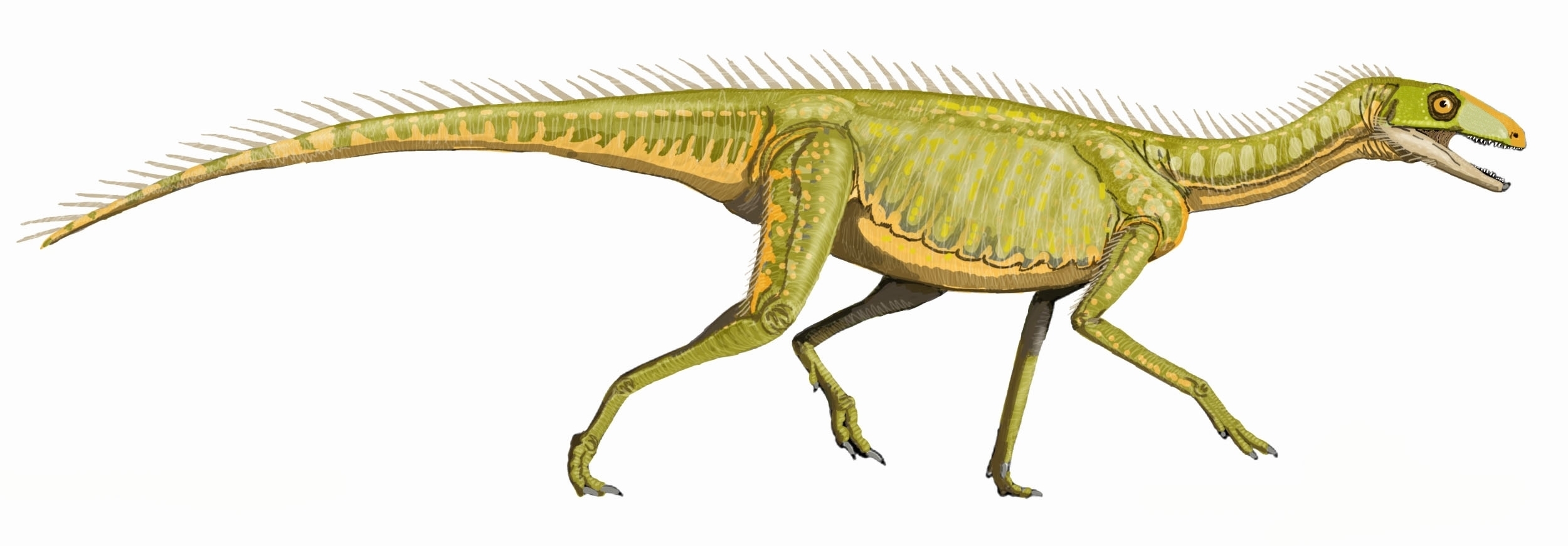
The Triassic wasn’t a peaceful time for early dinosaurs – it was a brutal competition where only the most adaptable survived. They faced fierce competition from other archosaur groups, early mammals, and various reptilian competitors. This constant pressure wasn’t a disadvantage – it was the evolutionary forge that hammered out the traits that would define dinosaur success.
Aetosaurs, with their heavy armor plating, dominated many herbivorous niches. Phytosaurs ruled the waterways like prehistoric crocodiles. Rauisuchians were apex predators that made early dinosaurs look like snacks. Yet somehow, dinosaurs not only survived this gauntlet but emerged stronger and more versatile than their competitors.
The key to their success wasn’t being the biggest or the strongest – it was being the most adaptable and efficient. While their competitors specialized in specific niches, dinosaurs maintained a flexibility that would serve them well when the next major environmental change arrived.
Metabolic Advantages
Recent evidence suggests that early dinosaurs may have possessed metabolic advantages that gave them a crucial edge over their competitors. While not fully warm-blooded like modern birds, they likely had higher metabolic rates than their cold-blooded contemporaries. This metabolic boost was like having a more efficient fuel system – it allowed for sustained activity levels that their competitors couldn’t match.
This metabolic advantage wasn’t just about being more active – it was about being more responsive to environmental changes. When temperatures dropped or food became scarce, dinosaurs could adjust their activity levels more effectively than their strictly cold-blooded competitors.
The improved metabolism also supported faster growth rates and more efficient reproduction. In the evolutionary arms race of the Triassic, these advantages were like having better weapons and armor – they provided a decisive edge in the struggle for survival.
The End-Triassic Extinction Game Changer
Just as dinosaurs were hitting their stride, another mass extinction event struck at the end of the Triassic. This might seem like bad timing, but it was actually the final piece of the puzzle that secured dinosaur dominance. The extinction eliminated many of their major competitors, including the dominant aetosaurs and most large archosaurs.
While devastating to many groups, this extinction was like clearing the final obstacles from the dinosaur path to dominance. The traits that had helped them survive the brutal Triassic competition now positioned them perfectly to inherit the Earth. It was the ultimate example of being in the right place at the right time with the right adaptations.
The End-Triassic extinction wasn’t just another reset button – it was the moment when dinosaurs transitioned from successful competitors to undisputed rulers of terrestrial ecosystems. The stage was set for their 165-million-year reign of dominance.
Body Plan Perfection
The Triassic period allowed dinosaurs to perfect their fundamental body plans through relentless evolutionary pressure. The basic dinosaur blueprint – upright stance, hollow bones, efficient respiration, and flexible joint systems – wasn’t just a random configuration. It was the result of millions of years of refinement under the harsh conditions of Triassic Earth.
This body plan perfection was like developing the ultimate multi-tool – it provided solutions to multiple environmental challenges simultaneously. The upright stance improved locomotion efficiency, the hollow bones provided strength without weight, and the advanced joints allowed for unprecedented mobility and dexterity.
By the end of the Triassic, dinosaurs had essentially solved the puzzle of how to be a successful large land animal. Their body plan was so effective that it would remain virtually unchanged for the next 165 million years, spawning countless variations but never requiring fundamental redesign.
Behavioral Innovations
The Triassic also saw the development of sophisticated behavioral adaptations that would become hallmarks of dinosaur success. Evidence suggests that early dinosaurs developed complex social behaviors, including pack hunting, parental care, and territorial defense. These weren’t just random behaviors – they were strategic innovations that multiplied their competitive advantages.
Pack hunting allowed smaller dinosaurs to take down larger prey, while parental care ensured higher survival rates for offspring. These behavioral innovations were like developing advanced tactics in warfare – they provided strategic advantages that pure physical adaptations couldn’t match.
The development of these behaviors during the Triassic established patterns that would define dinosaur society for millions of years. From the elaborate displays of later ceratopsians to the sophisticated hunting strategies of dromaeosaurids, the behavioral foundations were laid during this crucial period.
Ecological Niche Expansion
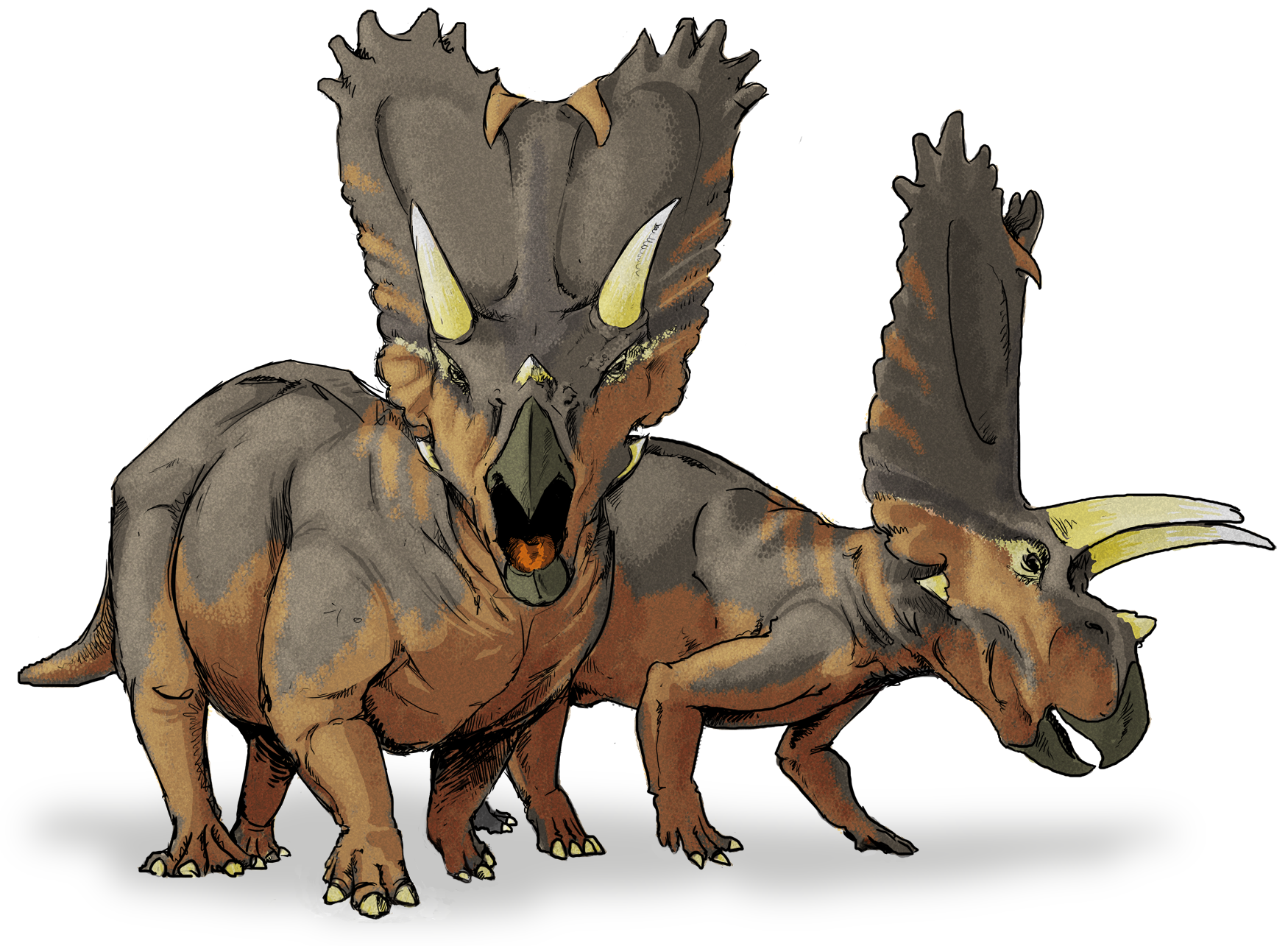
Perhaps most importantly, the Triassic period saw dinosaurs begin their expansion into every conceivable ecological niche. From tiny insectivores to massive herbivores, from swift runners to armored tanks, the dinosaur family tree began its remarkable diversification. This wasn’t just about trying different lifestyles – it was about systematic conquest of every available ecological opportunity.
This niche expansion was like a military campaign with multiple fronts. While some dinosaur lineages specialized in herbivory, others perfected predation. Some focused on speed and agility, while others developed size and defensive capabilities. The simultaneous exploration of multiple evolutionary strategies ensured that dinosaurs would dominate regardless of environmental changes.
The success of this multi-pronged approach became evident in the incredible diversity of dinosaur forms that would emerge in later periods. Every major ecological niche that could support a large land animal would eventually be filled by some form of dinosaur.
Timing and Opportunity
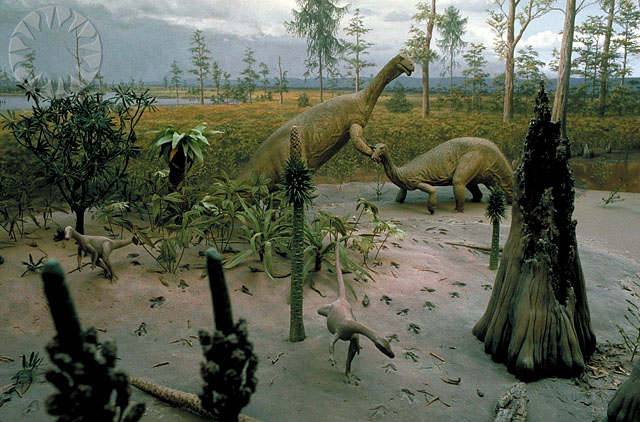
The Triassic period represents one of the most perfect examples of evolutionary timing in Earth’s history. The combination of environmental pressure, ecological opportunity, and genetic potential created a unique window where dinosaurs could not only survive but thrive. This wasn’t just luck – it was the convergence of multiple factors that created the ideal conditions for dinosaur dominance.
The timing was crucial because it occurred during a period of rapid environmental change that favored adaptable generalists over specialized survivors. Dinosaurs possessed exactly the right combination of traits to exploit this dynamic environment. Their success wasn’t inevitable – it was the result of being perfectly adapted to the specific challenges of their time.
This perfect timing would never occur again in Earth’s history. The Triassic period created a unique set of circumstances that allowed dinosaurs to establish their dominance so thoroughly that they would rule terrestrial ecosystems for the next 165 million years.
Legacy of Triassic Success
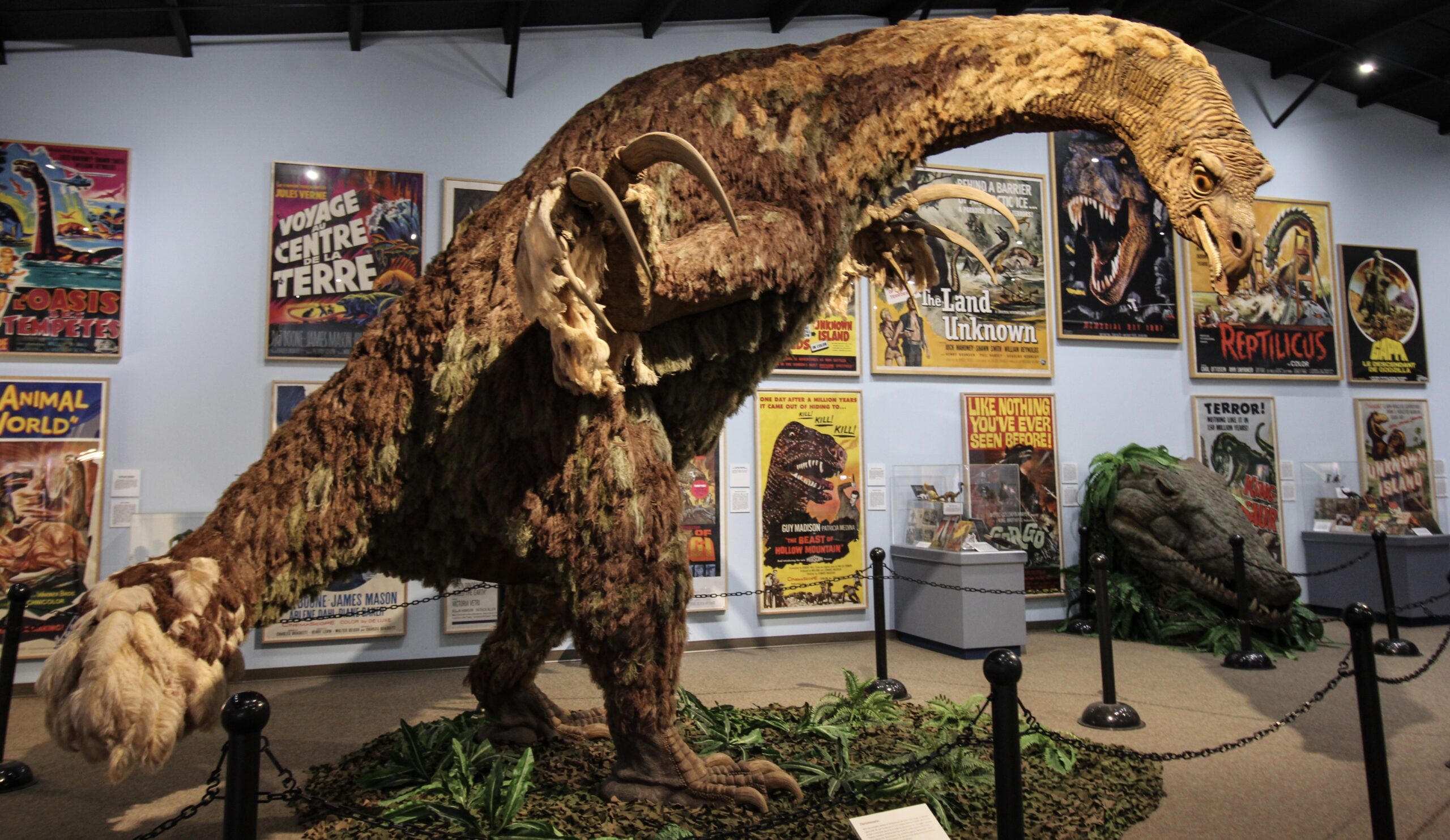
The Triassic period wasn’t just the beginning of dinosaur dominance – it was the foundation for one of the most successful evolutionary experiments in Earth’s history. The adaptations developed during this crucial period would carry dinosaurs through massive environmental changes, multiple extinction events, and countless ecological challenges. From the towering sauropods of the Jurassic to the fearsome tyrannosaurs of the Cretaceous, all dinosaur success can be traced back to innovations perfected during the Triassic.
The legacy of Triassic dinosaur evolution extends far beyond the Mesozoic Era. Modern birds, the direct descendants of dinosaurs, still carry many of the innovations first developed during this period. The hollow bones, efficient respiratory systems, and advanced metabolism that characterize modern birds are direct inheritances from their Triassic ancestors.
Understanding the Triassic origins of dinosaur success provides crucial insights into how life responds to environmental challenges and opportunities. It demonstrates that evolutionary success isn’t just about being the strongest or largest – it’s about being adaptable, efficient, and perfectly timed to exploit environmental opportunities.
The Triassic period stands as one of evolution’s greatest success stories, demonstrating how the right combination of environmental pressure, ecological opportunity, and genetic innovation can create evolutionary dynasties that endure for hundreds of millions of years. The dinosaurs didn’t just survive the Triassic – they conquered it, establishing a dominance so complete that their descendants still rule the skies today. In a world of constant change and challenge, the Triassic dinosaurs proved that sometimes, perfect timing really is everything.

